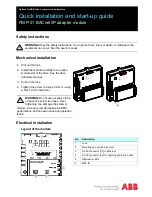
phrase, up to five (using 64-bit) or 13 (using 128-bit) alphanumeric
characters ((0-9, a-z or A-Z), in the pass phrase field.
●
Use hex Key
: Click
Use hex Key
to enable. Enter up to ten (using 64-
bit) alphanumeric characters, 0-9, A-F, or twenty-six (using 128-bit)
alphanumeric characters, 0-9, A-F in the hex key field.
9. Click
OK
to save the profiles settings.
NOTE:
You must use the same encryption type, index number, and WEP key as
other devices on your wireless network.
System Administrator Tasks
NOTE:
The following information is intended for system administrators.
How to Obtain a Client Certificate
If you do not have any certificates for EAP-TLS, or EAP-TTLS you must get a client
certificate to allow authentication. Typically you need to consult with your system network
administrator for instructions on how to obtain a certificate on your network. Certificates
can be managed from "Internet Settings", accessed from either Internet Explorer or the
Windows Control Panel applet. Use the "Content" page of "Internet Settings".
Windows XP and 2000:
When obtaining a client certificate, do not enable strong private
key protection. If you enable strong private key protection for a certificate, you will need
to enter an access password for the certificate each time this certificate is used. You
must disable strong private key protection for the certificate if you are configuring the
service for TLS/TTLS authentication. Otherwise the 802.1x service will fail authentication
because there is no logged in user to whom it can display the prompt dialog.
Notes about Smart Cards
After installing a Smart Card, the certificate is automatically installed on your computer
and can be select from the person certificate store and root certificate store.
Setting up the Client for TLS authentication
















































